WHEN WINTER ROLLS AROUND, there are three options that climbers usually consider: We can head to the climbing gym, hang up our rock shoes in favor of another sport, or work hard so that we can take off more time the next season. I live in Southern California where the desert can get pretty cold, but there is always somewhere to climb. I headed to Colorado though, where snow and “real” cold can transform an easy climb into an epic adventure. I need a little burst of adrenaline to feel awake and motivated, which I don’t get in a gym. I packed my ice climbing gear into the back of my truck and, against popular opinion, I also packed my rock gear. Even though I lived in Colorado for 16 years, I wasn’t sure what I would find.
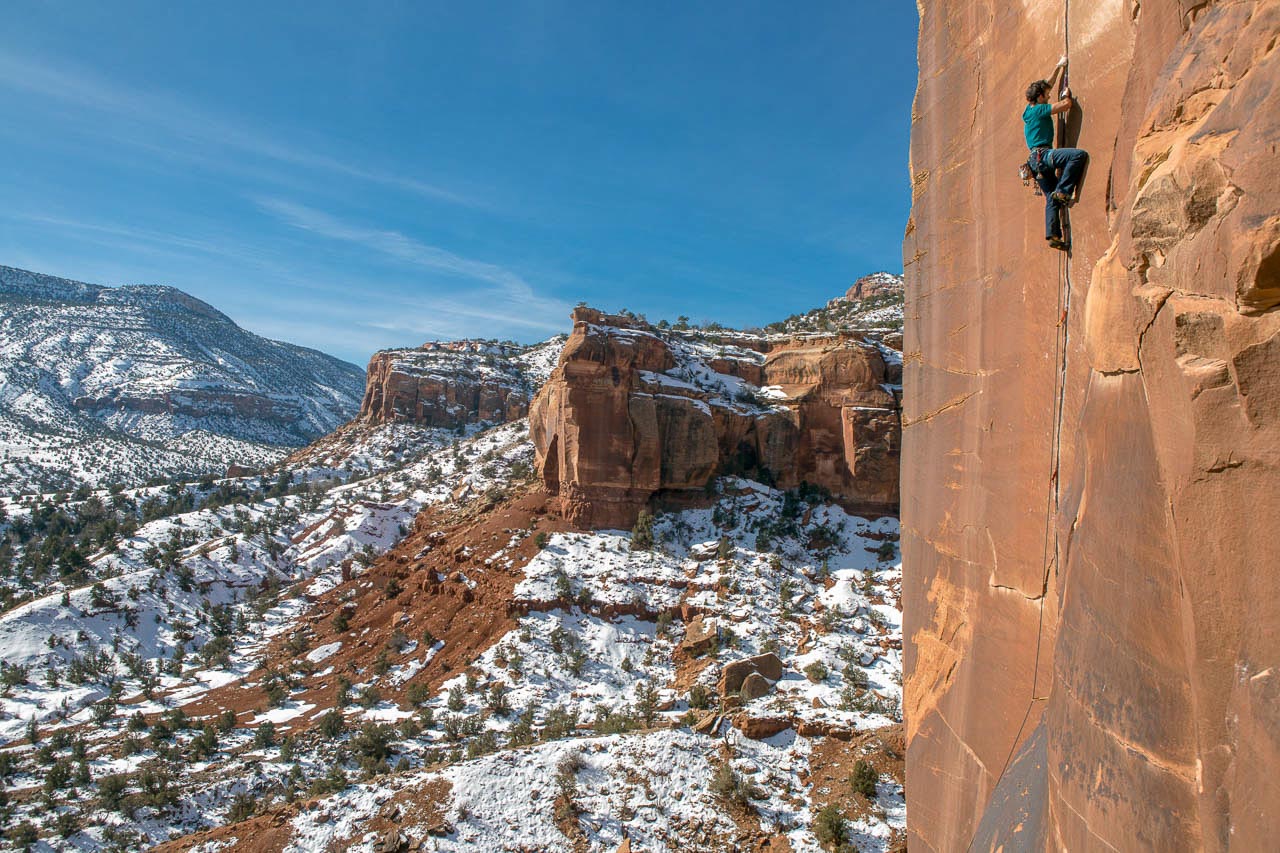
When the sun comes out the rock is like a solar oven.
When most people think of winter adventures in Colorado, rock climbing is rarely factored in. In a state where winter activities bring in millions of people a year, only a handful of people come here for the climbing while the ski lifts are still running. Even Colorado-based climbers tend to switch from rock shoes to ice boots. In the southwest of the state, red sandstone cliffs, desert, and warmer temperatures replace the pine forests and high peaks that Colorado is known for. The desert gets temperatures at night that are as frigid as anywhere else in the state, but during the day the exposed rock reflects the warmth from the sun, like a solar oven. The routes here are often too exposed to the heat to climb in the summer.
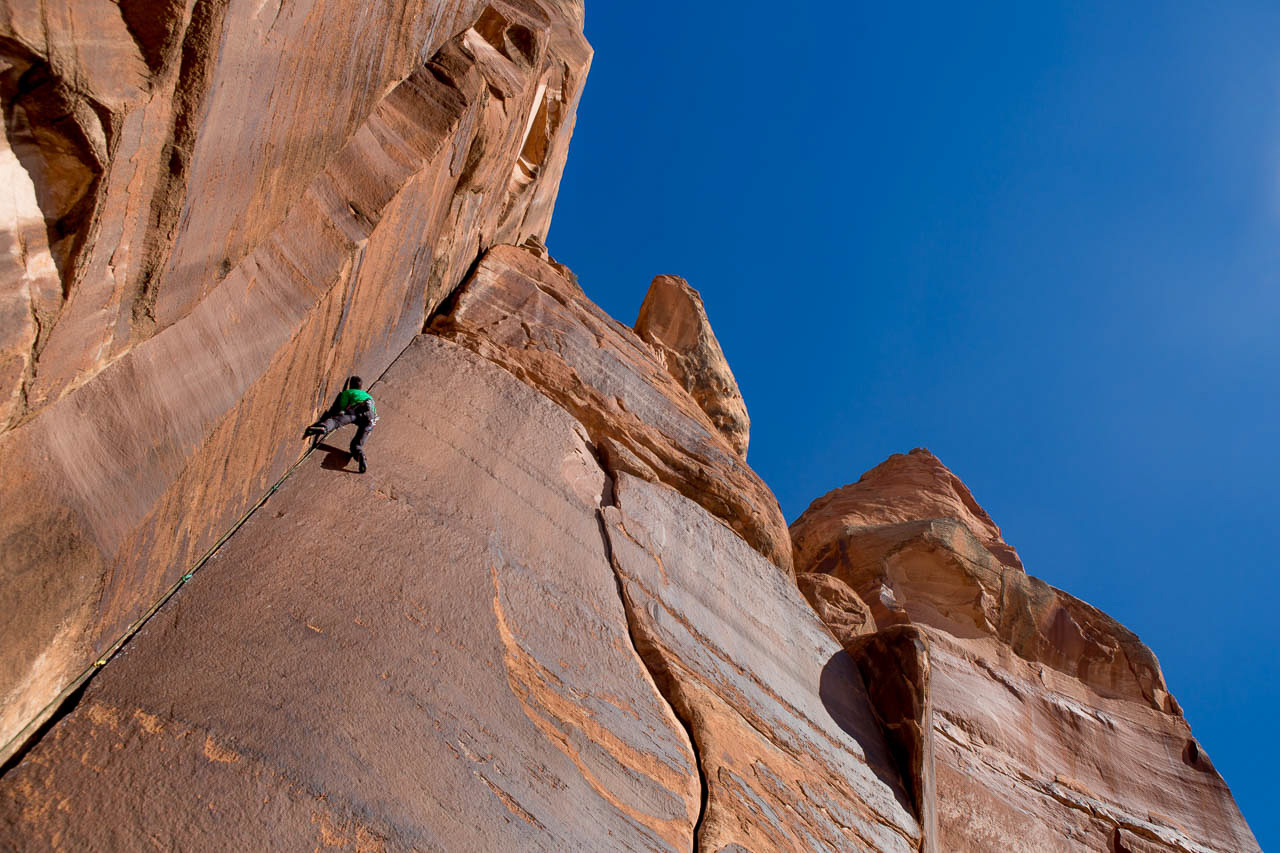
Your shoes stick better to the rock when it's cold.
“Sending temps” is a phrase that we use when climbing in colder temperatures. The cooler environment keeps the climber from overheating, and creates more friction between your shoes and the rock. Climbing when it’s hot out, the rock begins to feel greasy and your feet tend to slowly ooze down the rock. The rubber on climbing shoes is extremely soft, allowing your feet to find purchase on the tiniest of edges. Cold temps help them stay there.
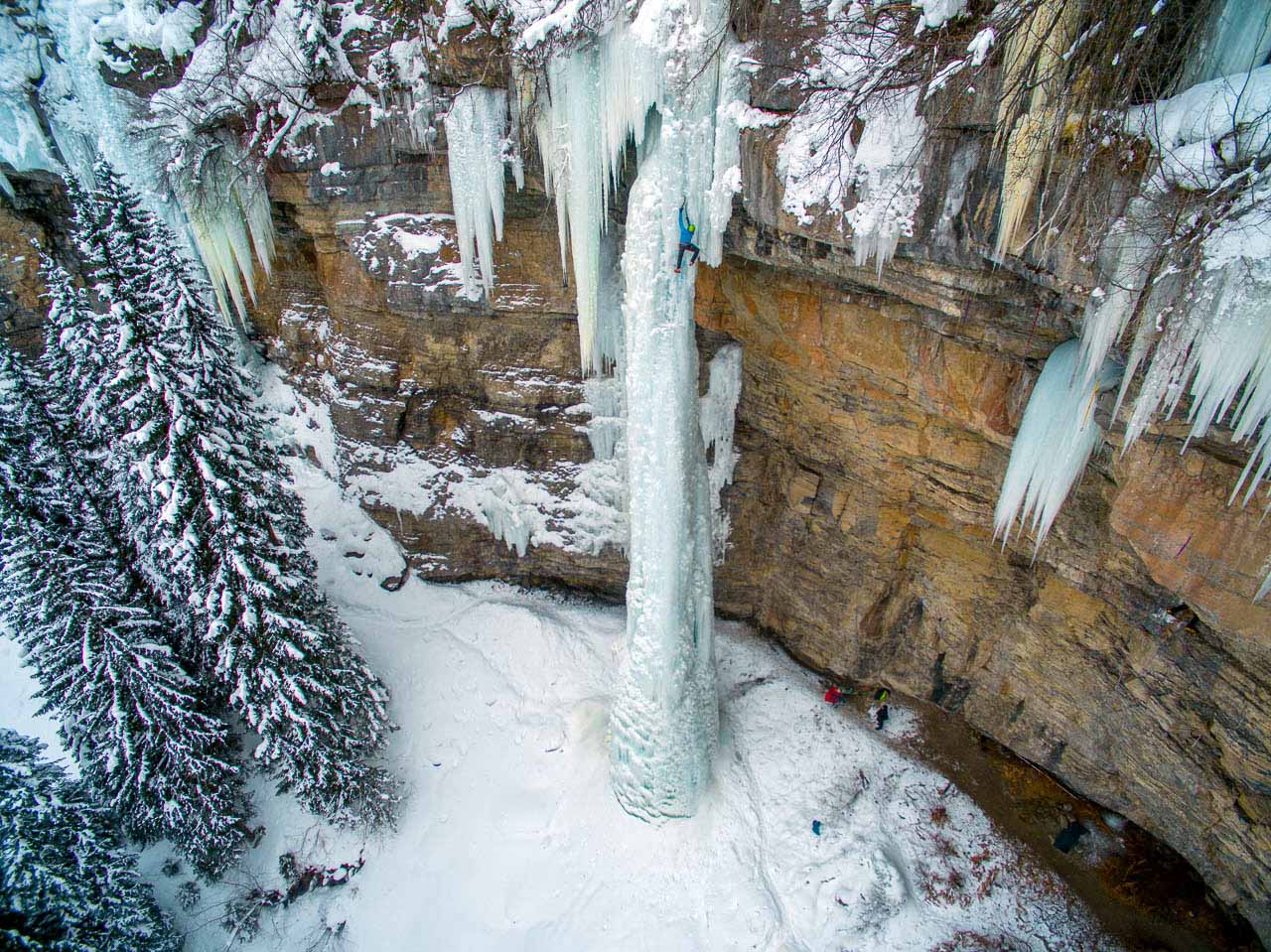
You get to ice climb.
If you’re driving past Vail, Colo., in winter, look toward the south. On the mountainside is an ice and mixed-climbing crag that transformed the sport. On the left side of the rock amphitheater is a climb called “Rigid Designator” — on the right, a free hanging ice column known to climbers as “The Fang.” Both are now considered easy compared to modern limits, but the position and the thrill of climbing these white pillars still brings climbers here from around the world. It’s amazing to see how much an environment can change through the years, and to have entirely different experiences in the same place only a few months apart.
Intermission
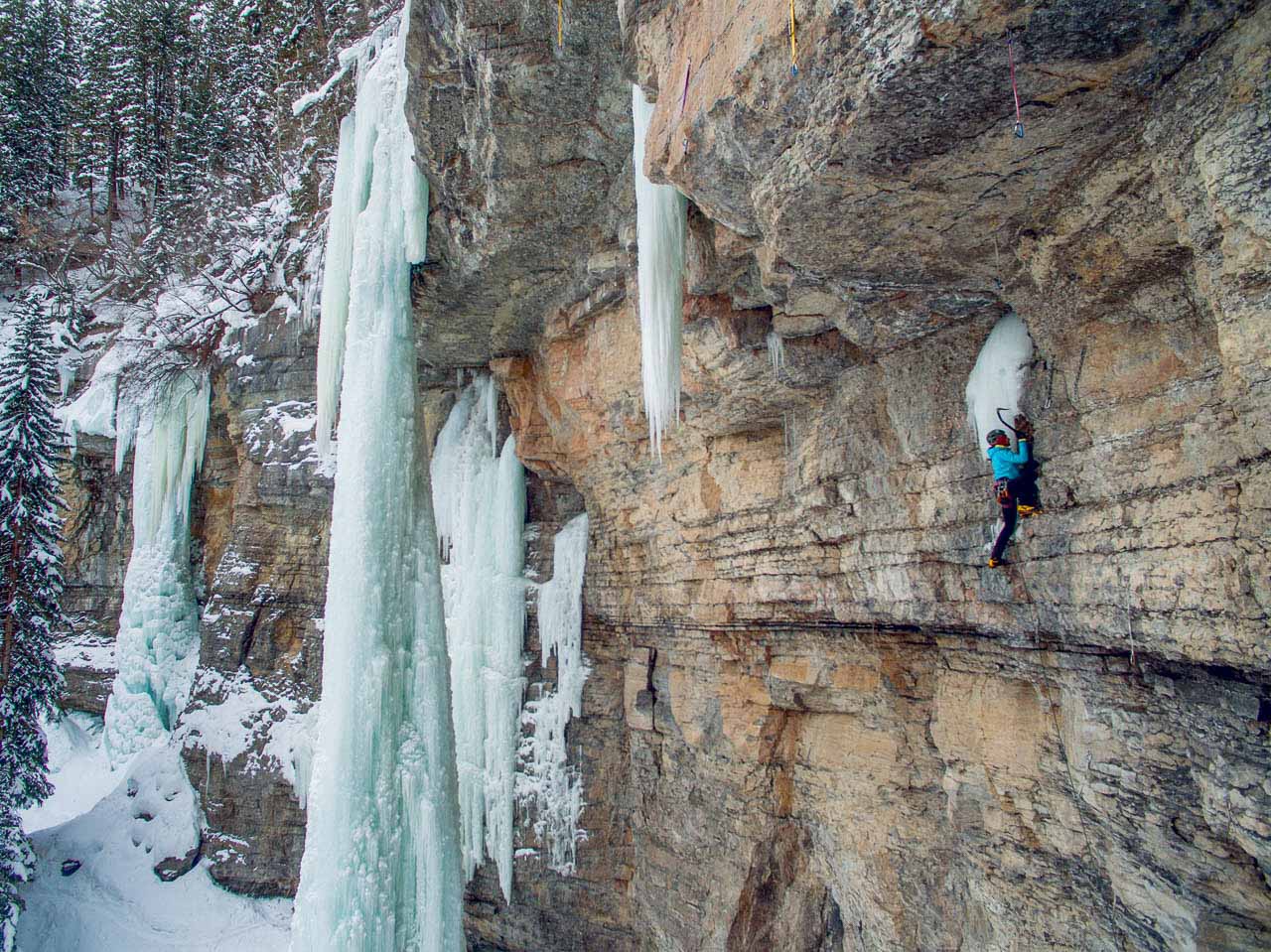
You get to try out mixed ice-climbing.
When the ice is thick and resilient enough to hold an axe, climbing it is a matter of being able to hold on long enough to place protection from a fall in the ice, and still work your way to the top. As climbers improve they move on to thinner sheets of ice. Sometimes routes have very little ice at all, and the climber must stop swinging the axe into the ice. The climber will hook the sharp tip of the axe on minuscule edges of ice or even rock to find purchase. These are “mixed” routes, as you are sometimes on ice and other times rock. The overhanging rock in the amphitheater behind 'The Fang' was where mixed climbing transformed from an occasional necessity to a sport of its own. As climbers got better at using ice tools on rock, the routes they tackled had less and less ice. The routes in East Vail offer variation for all skill levels, and options for every condition. I’ve heard of people climbing here in summer, ascending the rock walls in shorts and a T-shirt with no ice at all.
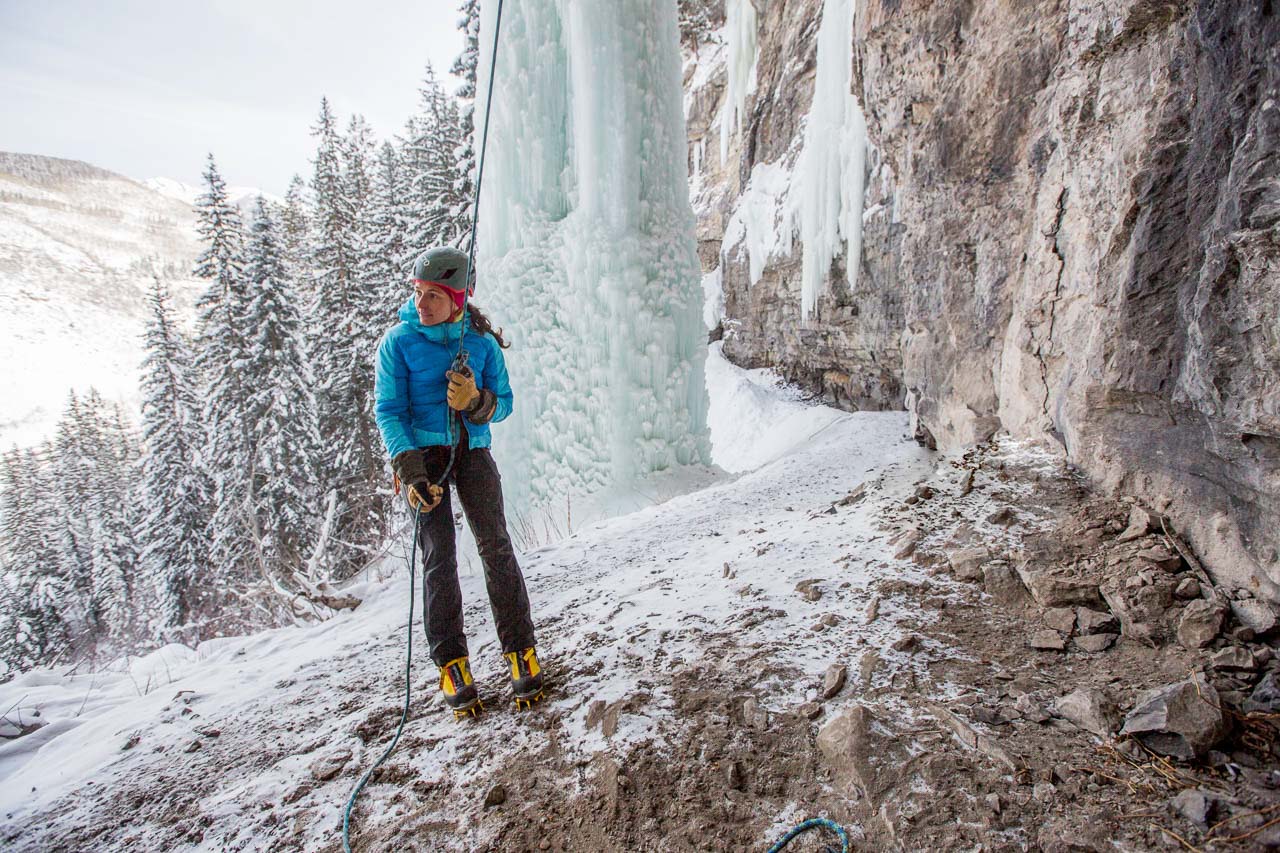
The people you meet are dedicated.
It takes a lot of effort to climb in the winter, you no longer simply throw some gear in a bag and set off on the trail. You have to think about how you’re going to get there, what condition the trails are in, how many extra layers you’re going to need, and the condition of the ice. I’ve turned around defeated before ever reaching the trailhead because the roads had not been plowed, or because the threat of an avalanche coming down from above made conditions too dangerous for the approach. People who know about these risks, and are willing to put the extra effort in to spend the day at the crag are usually more dedicated, and more “core” than the summer crowd. I feel like I have a decent amount of experience, but on this trip with Ilanna Jesse I was by far the weakest link. Everybody who was climbing that day in the negative temperatures was an expert in the environment as well as the climbing.
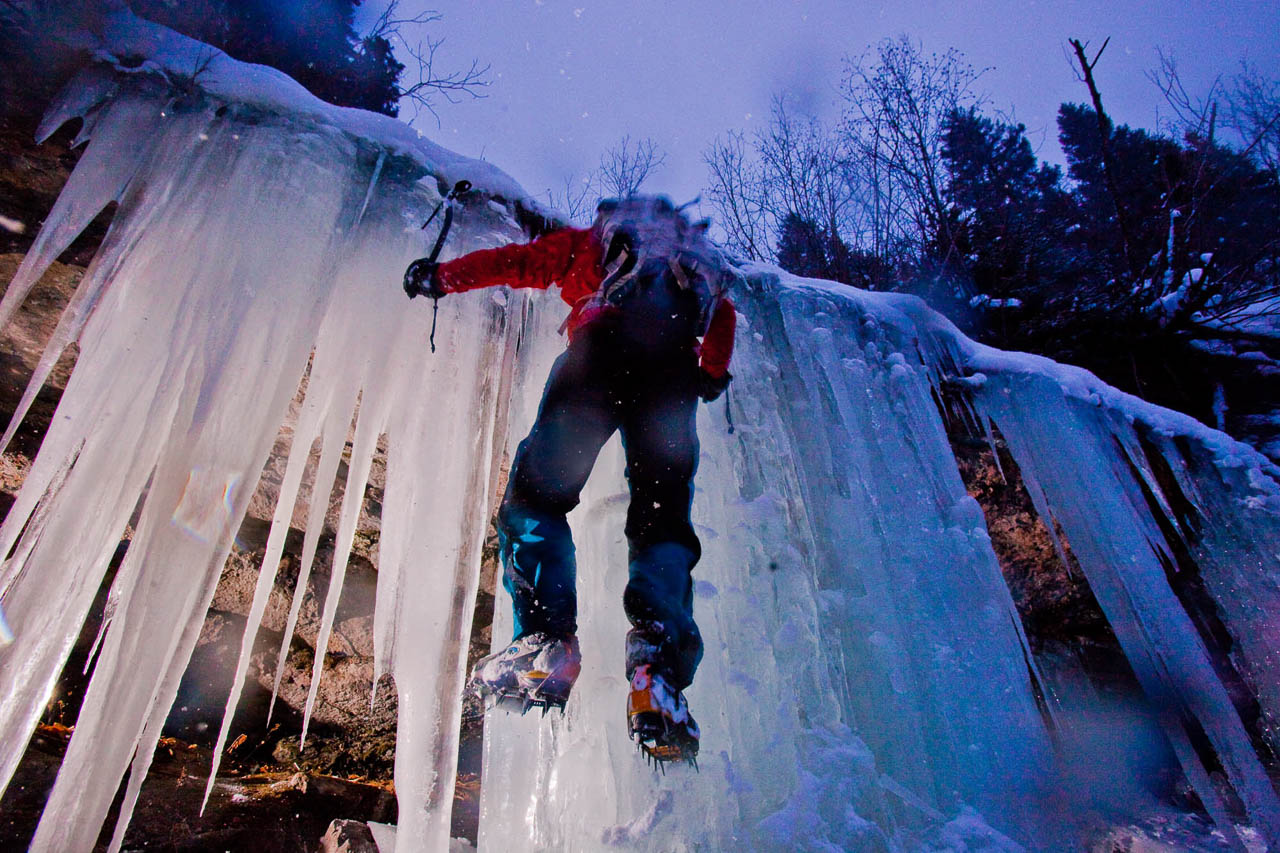
You don't have to start ice climbing on epic waterfalls.
I lived in Edwards, Colo., only half an hour from the ice falls in East Vail, for close to 16 years. At the time it was a much quieter town than it is now, and it’s still pretty quiet. On nights when I didn’t have anything to do I’d grab my ice tools and head out. Learning to ice climb, you don’t have to jump right onto the scary stuff. There are a few spots near Vail that have fun little ice falls in series that let you learn the basics in a fairly tame environment. Just like learning to move on rock is easier to do when you don’t have to worry about ropes and height, learning what ice will hold your weight, and the best place to stick the tip of the axe when the ice is thin is much easier to do when the ice fall is only 10 feet tall. I used to go at night after work, the light from my headlamp seemed to be absorbed by the ice, and the whole waterfall would glow a beautiful blue.
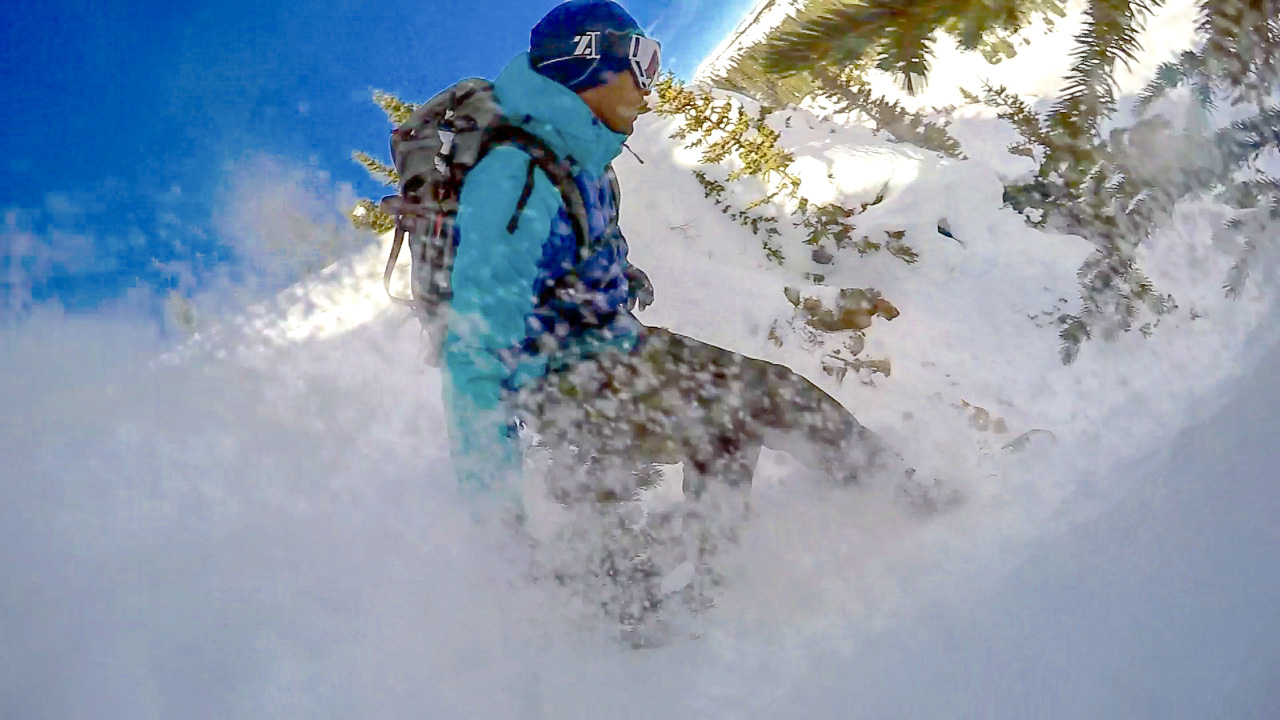
You get to spend meaningful time in the backcountry.
What I find exciting about the backcountry in winter is finding routes through the mountains that are unavailable to those not willing or capable of mountaineering. I took an old pair of ice-climbing boots and some spare snowboard boots and disassembled them. I riveted them together into a frankenstein boot that I could use to ice climb and snowboard. With those boots I can snap crampons on my feet and climb a steep couloir over ice falls with my board strapped to my back, and then descend the same route I just climbed. It opens up a whole new world of possibilities, and the mountains are no longer just something you look at, they are a playground.
Intermission
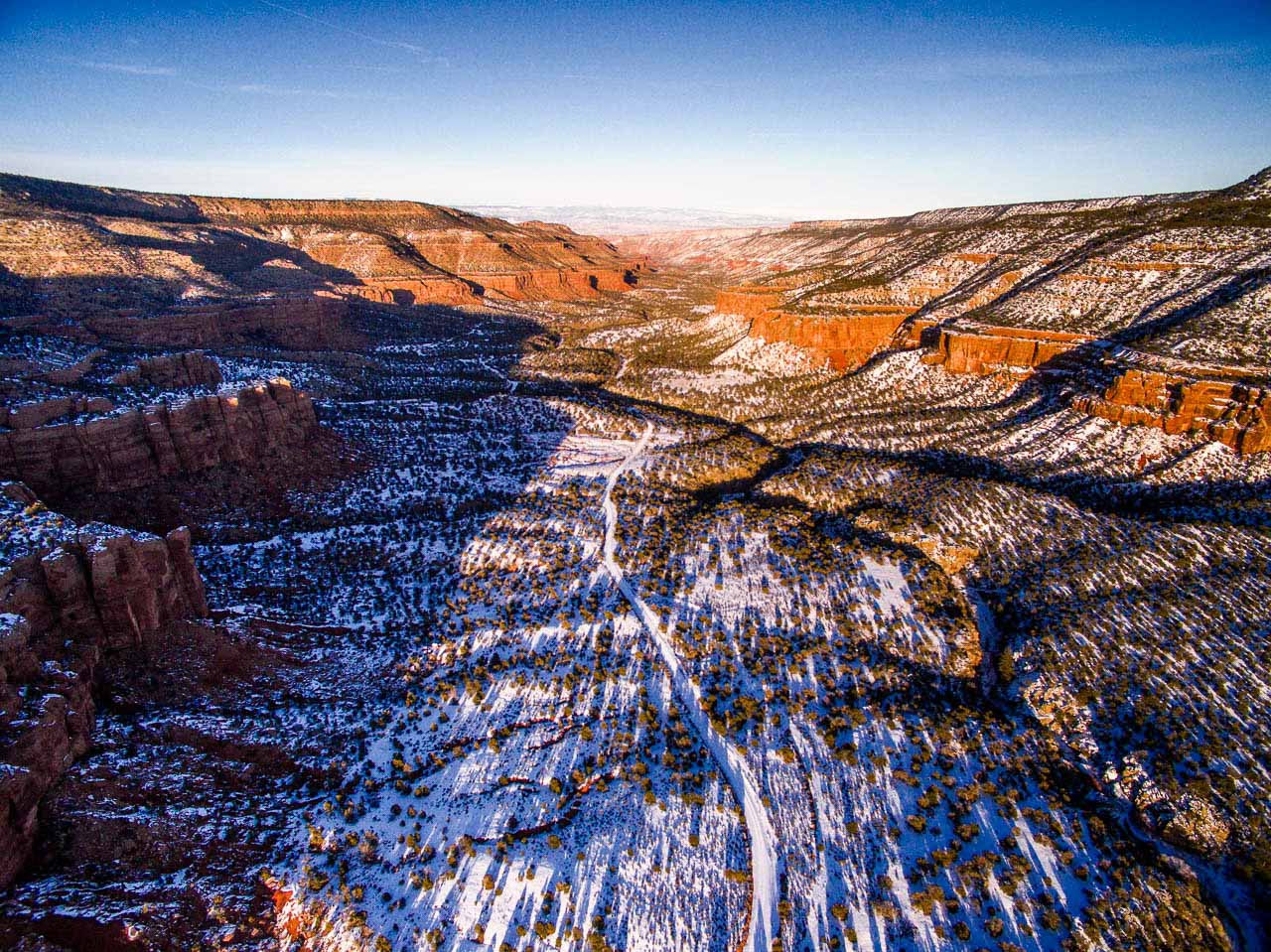
The crags are pretty much empty.
Rock climbing is going through the same phase that surfing went through in the 60s. It’s being popularized by the media, and is no longer a sport full of dirtbags and outcasts — it’s become cool. Crags get crowded and finding solitude has become far more difficult. Classic routes can have a line at the base. Most of these people are fair-weather adventurers, and prefer to head to the climbing gym in the winter rather than brave the cold. That’s fine with me; in two days of climbing in southwestern Colorado, I only saw one other party as we crossed paths in the parking lot.
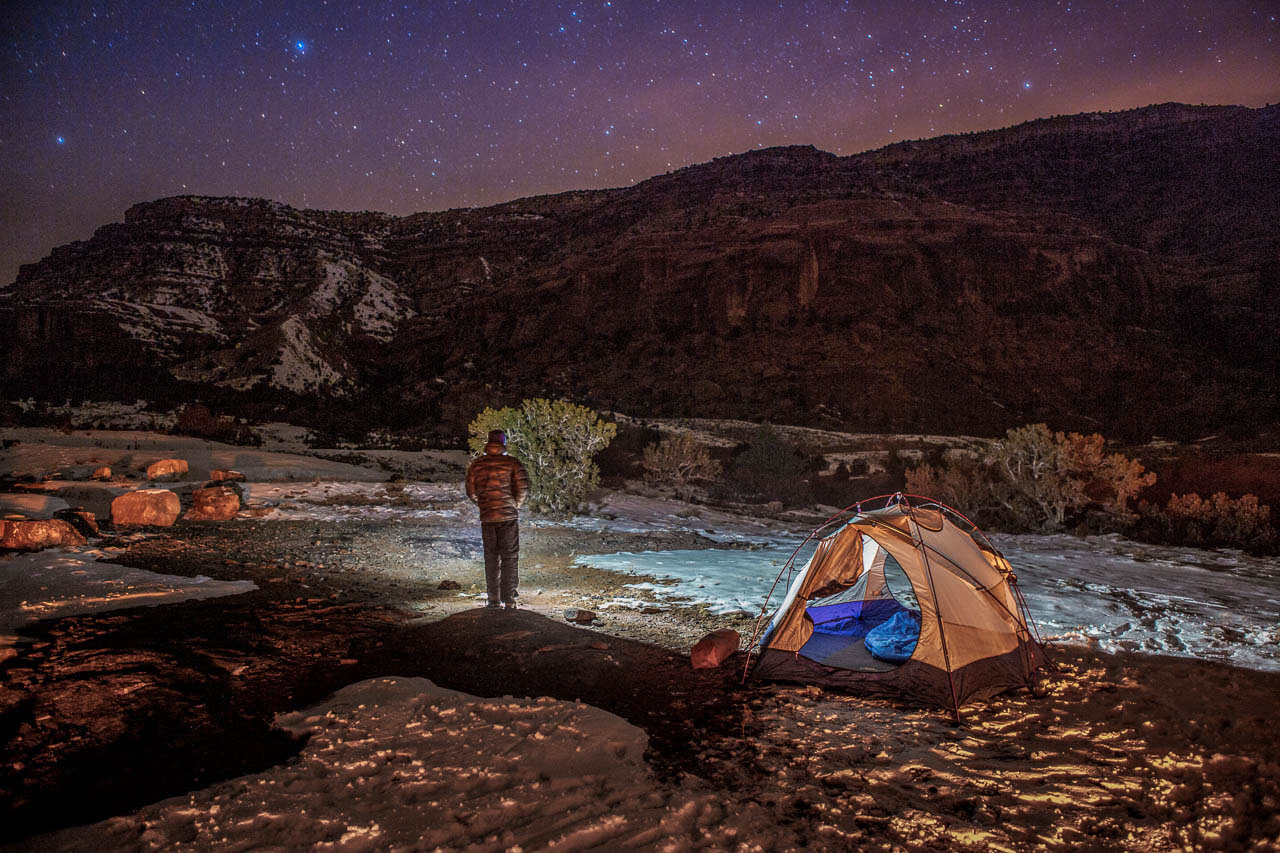
Winter camping is invigorating.
Having adventures in winter takes a bit more preparation than it does in summer. The equipment used is more specialized and technical, because we really do depend on it to keep us safe, not just comfortable. Entering the backcountry requires experience and a skill set that everybody needs to be prepared with. An avalanche beacon is mandatory when leaving the beaten path, as is a good snow shovel, probe, and extra layers. Camping out in the snow, you might think the most important thing is a warm sleeping bag, but I find the sleeping bag only works when on top of a really well insulated sleeping pad. The clothes you wear can make being even in the most uncomfortable environment a leisure activity, and learning to bring the right layers will make or break your day. My favorite winter gear comes from Outdoor Research, who sponsored this trip to Colorado. I’ve been using their gear for over 20 years and have loved all of it. Lastly, staying safe on the road means having really good winter tires, not just all terrain tires. They are the difference between having the best adventure of your life, and being stuck in a snow bank waiting for a tow-truck. Colorado is a world-class winter playground because the environment here challenges us, and there is always another level to push into once we get comfortable where we are.

Or, if you'd rather sleep in a van that's cool too.
One disadvantage to winter climbing trips is that when you’re climbing where there are no hotels, or you just don’t want to spend the money on one, finding a place to crash can be really tough. You either have to be super hardcore and sleep outside in a tent, or you have to make it a day trip. I like to climb for a few days because, for me, free time comes in chunks. I secured a winterized campervan from Colorado-based Native Campervans in exchange for some photos for their website and couldn't have been happier. The insulation of the vehicle helps retain your heat throughout the night, and if it gets too cold you can always put the heater on for a bit. Besides a bed, there was the added bonus in my van of having a kitchen and a pop-up table. I was on the road for two weeks, planning ahead to have this van made the trip infinitely more casual.
